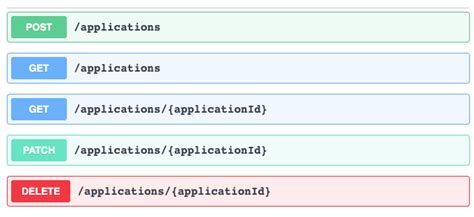Fujitsu SPARC servers
Posted on April 27th, 2009
If you a meaty Unix Server to run Solaris on have a look at Fujitsu SPARC Unix Servers – enterprise class!!
Of course, It probably wont be long until we are seeing Oracle branded servers…
(I, for one, welcome the new corporate overlords)
cisco router http server IOS configuration
Posted on April 24th, 2009
here are the commands that worked on a 3620 IOS, in order:
Would you like to enter the initial configuration dialog? [yes/no]: n
(RETURN)
// enable mode
Router>en
// configure the console to stop those annoying messages while you’re typing
Router#conf t
Router(config)#line vty 0 4
Router(config-line)#logging synchronous
Router(config-line)#end
Router#
// configure an ethernet interface
Router#conf t
Enter configuration commands, one per line. End with CNTL/Z.
Router(config)#int fa0/0
Router(config-if)#ip address 192.168.1.118 255.255.255.0
Router(config-if)#no shut
Router(config-if)#end
Router#
// launch the http server
Router#conf t
Router(config)#ip http server
Router(config)#end
Router#
// and now a little sip of coffee, while we admire our handiwork:
// check our work
Router#sh ip http server all
// view connections as they occur
Router#debug ip http all
// view current config
Router#sh ip int br
// we should perhaps end with a copy running-config startup-config ?
NEED MORE?
In case this doesn’t work for you, and you want to see what was happening in the IOS, I will paste the actual transcript – with all the system messages and responses included – in the comments, to avoid littering the post.
Make a redundant load balanced web or db server
Posted on January 9th, 2009
OK, a clustered web server is not the same as a Beowulf (I never said it was).
However both projects can share practices such as diskless booting, BOOTP, DHCP (with fixed IPs for server MAC addresses) and so on. One thing I want to implement now is to have a service, such as mysqld or apache, on more than one node, with a load balancer (which also has a redundant node) serving requests on one incoming IP.
This can be acheived with UltraMonkey and heartbeat:
Ubuntu Server VMware VA image
Posted on August 5th, 2008
You can download the same copy of Ubuntu server VA from which I will be basing my examples here. It is not the latest version, as upgrading the image will form part of my tutorial.
(Please note! I was not responsible for creating the VMware Virtual Appliance itself, any questions about it please direct to the author – see description below)
INSTRUCTIONS
http://nevynsblog.posmena.co.uk/VMwareUmbongo7.10srv.tar.gz contains:
Ubuntu7.10Server.README.txt
VMware-UbuntuServer-7.10.7z
VMware-UbuntuServer-7.10.7z.md5
If you are using Linux, download the file, and extract it into the current directory with “tar xzfmv ./VMwareUmbongo7.10srv.tar.gz”. You can “md5sum VMwareUmbongo7.10srv.tar.gz” and verify the file integrity by ensuring the output matches the contents of VMware-UbuntuServer-7.10.7z.md5 with “cat ./VMware-UbuntuServer-7.10.7z.md5”.
If you are on Windows, download WinRar from http://www.rarlabs.com/download.htm. This will handle extracting the .tar.gz and then the .7z file.
DESCRIPTION
The package also contains a readme file which you can read locally, but to spare you the 70MB download, I will repost here:
Ubuntu Server 7.10 (Gutsy Gibbon) Minimal Install
This is a standard (minimal) install of ubuntu 7.10 server, in a 69MB package. … username: toor password: password. you can issue commands as root using sudo …
www.vmware.com/appliances/directory/1060 – 9k
VMware Image – Ubuntu Server 7.10 (Gutsy Gibbon)
About:
This is a standard install of ubuntu 7.10 server, in a 75MB package.
This VM can be usefull for quickly deploying a base operating system from a small package, and with a minimal configuration time (about 2 minutes).
Some steps were taken to reduce the archive size down to a minimum:
* Some temporary data has been removed from /var (namely apt cache, installer logs, etc).
* The partition was also cloned to a new .vmdk as a part of the shrink process.
* The archive is in 7-Zip format (GPL – search you package manager or grab it from http://www.7-zip.org).
Aditional software included:
* The only extra package installed was ssh-server.
Login details:
username: toor
password: password
you can issue commands as root using ’sudo ‘ or enable the root user issuing the command ’sudo passwd root’.
VM Configuration:
Uppon login, your first action should be to run the ‘configure.sh’ script using ’sudo ./configure.sh’. this will enable you to configure:
* Keyboard,
* Timezone
* Password
* Hostname
* Network interface(s)
* DNS
Download:
Grab it here: VMware-UbuntuServer-7.10.7z. ( http://www.jcinacio.com/down/vmware/ubuntu-server-7.10-1/VMware-UbuntuServer-7.10.7z )
Also, md5 checksum ( http://www.jcinacio.com/down/vmware/ubuntu-server-7.10-1/VMware-UbuntuServer-7.10.7z.md5 ) and gpg signature ( http://www.jcinacio.com/down/vmware/ubuntu-server-7.10-1/VMware-UbuntuServer-7.10.7z.asc ) (key id: 0×146379A4).
If you find this appliance useful in any way, please link to this site.
Contact:
* Joao Inacio or at http://www.jcinacio.com
Changelog:
* 18 October 2007
– Initial release
* 20 October 2007
– Fixed network interface (eth0) name change due to new UUID
Just a quickie
Posted on July 29th, 2008
Hi folks, wanted to post a follow-up to my introduction to LAMP servers, in case you found it a little too vague and lacking in detail. (Which was intentional, since I was pitching it towards newbies).
Without advocating any particular distribution / server, be advised that most of the examples I will give here will be based on a debian/UBUNTU system, due to current popularity. You can download and install Ubuntu for yourself, if you have a spare machine, or if not, look out for the ~69MB Ubuntu Server available as a VMware VA (virtual appliance) format.
I also tend to work with RHEL based CentOS distros, from time to time, and of course, the variety of other UNIXes from the collective boxen in the hive. However, they are beyond the scope of this discussion, so assume unless otherwise stated that my examples are running on an Ubuntu server.
Here’s a place to get a useful step-by-step guide on howto get your Ubuntu LAMP server up and running, although it looks as though they’ve been extending it and improving since I last took a copy: http://mysql-apache-php.com/
Apache, MySQL and PHP (AMP Servers)
Posted on July 22nd, 2008
What is an AMP server? (also known as LAMP, WAMP, XAMPP…)
As the title suggests, Apache, MySQL and PHP (or sometimes PERL) running together make an AMP server. LAMP suggests that they are running on a Linux platform, WAMP denotes a Windows server and XAMPP is a package that can be used to setup an AMP server on Apple’s OS X.
Apache is a web server
MySQL is a database engine
PHP & PERL are scripting languages typically used on web servers.
Whilst PERL (Practical Extraction and Reporting Language) is a very mature and powerful language, novice programmers may find it difficult to start with. PHP on the other hand, was intentionally written with the novice developer in mind, deliberately making it easy for novices to create web pages and applications. It has also matured, and supports Object Oriented Programming concepts, such as classes, Inheritance and so on, has a clean looking syntax resembling C/C++ (simmilar comments, and bracing styles).
It does upset some OO purists as in keeping with PHP’s ‘lets keep things simple for the webbie’ approach meant it has done things in a way that might not be considered ‘true’. For example, it is not a strongly typed language, and it recently changed its default behaviour for passing by value and passing by reference.
If none of that made any sense to you, don’t worry!! You could start out with PHP writing things in a procedural style, and find that as your skills develop, you will discover that PHP can grow with you, and you can begin to adopt the OOP style.
(Object Oriented Programming, vs Procedural style.)
Now this post is deliberately short, and meant as an introduction to new users. There are other alternative databases, webservers, and scripting languages, and I am not suggesting they cannot be used instead. In fact, the concepts which apply to an AMP server could equally apply to IIS, PoorMan, Lighthttpd, PostgreSQL, Oracle, SQL server, and so on – feel free to experiment and find what works best for you! =)

Coding is our passion
Usualy accompanied by a caffeinated beverage - although we’re more likely sipping a latte than some Jolt! cola these days!
If you found anything on this site useful and want to say thanks, then you could always:

Microservices and RESTful APIs
We work with your company in a constructive way to refine your vision, exploring the Art-of-the-Possible, help write IaC (Infrastructure-as-Code) with Terraform, promote a DevOps culture and build a World Class Cloud Platform.
We can also provide help to go from the very basics of designing your API contract in Swagger/OAS to building a container by writing a Dockerfile, through to a creating a fully orchestrated CI/CD pipeline in Jenkins to deploy to Rancher, Kubernetes and Istio. We can help set up Kong API Gateways, and lots more besides!
More





